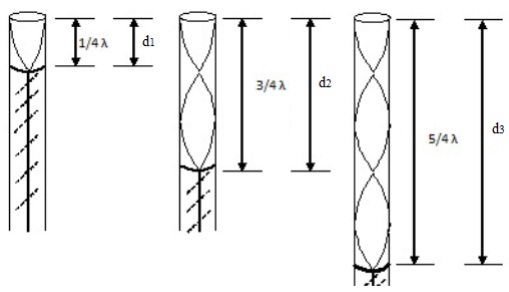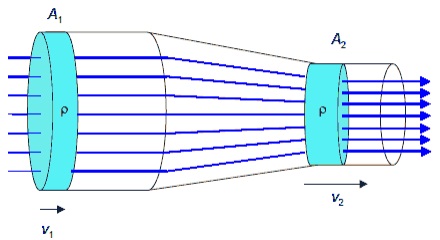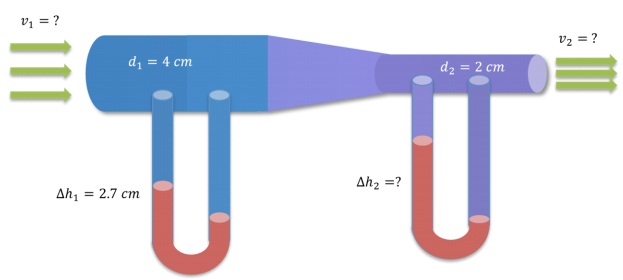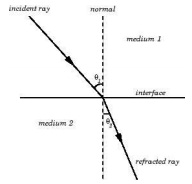Assignment:
1. In St. Augustine there are alleged ghosts. During the night, there is an unknown frequency which emits from unknown sources in the air. A scientist decides to investigate what the frequency is by going near the source of the noise and holding a closed end tube (much like the one in the lab) and measuring where the nodes are. The scientist hears higher frequencies at d110cm, d2 = 28.2cm and d3 = 53cm. The measure ments follow the diagram below:

a. What is the average of the wavelengths that the scientist found?
b. Using v = 340 m/s, and the average wavelength, what is the frequency the unknown sources emit?
2. The figure below shows water going through a pipe. The diameter of ??1 is three times the diameter of ??2. What is true about the velocity of ??1 ?????? ??2? Show work which leads to the correct answer.

a. ??1 = 3??2
b. ??2 = 9??1
c. ??2 = 3??1
d. ??1 = 9??2
3. Look at the following figure of the airflow apparatus (Venturi tube). The arrows represent airflow inside a tube. With the information given and ???????? = 1.2????/??3 ; ???????????? = 1000????/??3 : Find ??1, ??2 ?????? ?h.

Part 1. From the Previous Lab
1. A beam of light shines through air when it hits another medium at an angle of ??1 = 30° from the normal. The second medium which the light propagates through is unknown but the velocity of light as it propagates through this medium is ?? = 2 · 103 ??⁄??. The setup is shown below:
a. Determine the index of refraction of the second medium
b. Determine the refracted angle ??2

2. A laser shines some light onto a diffraction grating with a grating pattern of ?? =1/400????/??????????. The first maximum occurs at x = 0.3cm from the m = 0 maximum. If the distance between the grating and the screen it shines on is 10cm, what is the wavelength of the light?
Part 2: Optics:
Based on our own intelligence, the clear window ports in the Zenit-8 capsule appear to be about 15 inches across. To include some buffer for mounting, let us assume the aperture (lens diameter) of the camera is 12 inches diameter.
The bigger the aperture of a camera, the more light it collects and the brighter the image becomes. However, if the focal length also increases, then the magnification increases and the light is spread over more pixels (meaning individual pixels now collect less light). Because image brightness is affected by both aperture size and focal length, camera systems are often characteriszed by their focal ratio. If you have any experience with photography this is the "f-number" or "f-stop" designated by f/#. Focal ratio is simply.
??/# = ????/??
Where FL is the focal length and D is the aperture diameter, both in the same units (m).
1. What is the focal ratio of the Zenit-8 camera? __________________
2. Is this large, or small, or reasonable compared to a standard commercial camera? If you're not sure, try asking a friend, or searching for common focal ratios found on camera lenses.
Part 3: Working with Thin Lens
There is a system of two lenses shown below with a table of attributes describing the system
|
Lens 1
|
Lens 2
|
|
f1 = 10cm
|
f2 = 10cm
|
|
p1 = 30cm
|
P2 = ?
|
|
q1 = ?
|
q2 = ?
|
d =35cm
Calculate the unknown values in the table. "d" is the distance between the lenses. Start from left and apply the thin lens equation and go towards the right.
a. What is the magnification of the last image?
b. I've depicted an inverted stickman as the ending image, is this accurate
